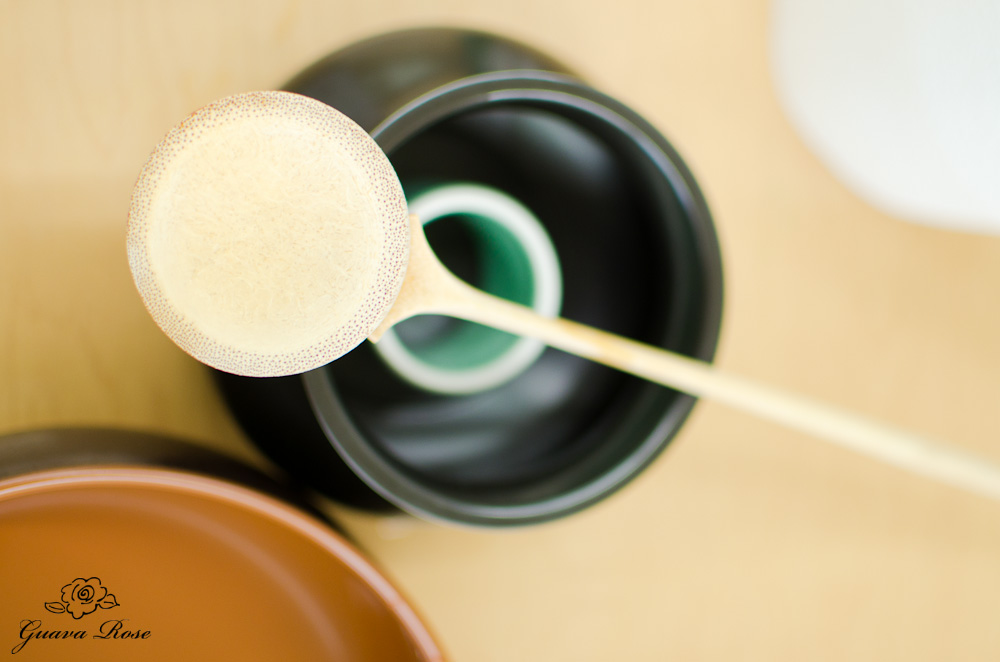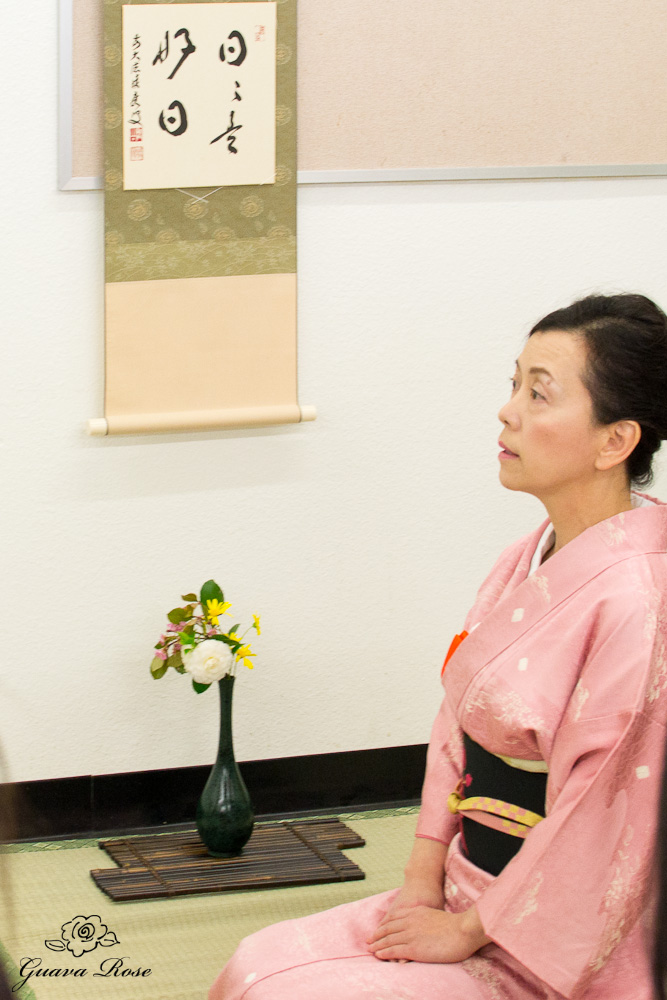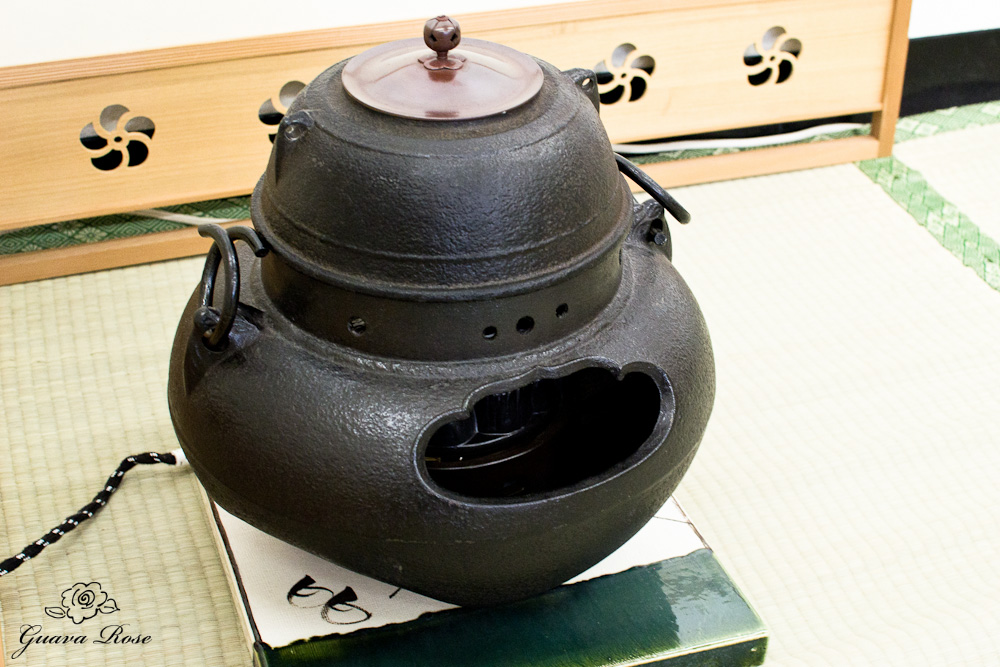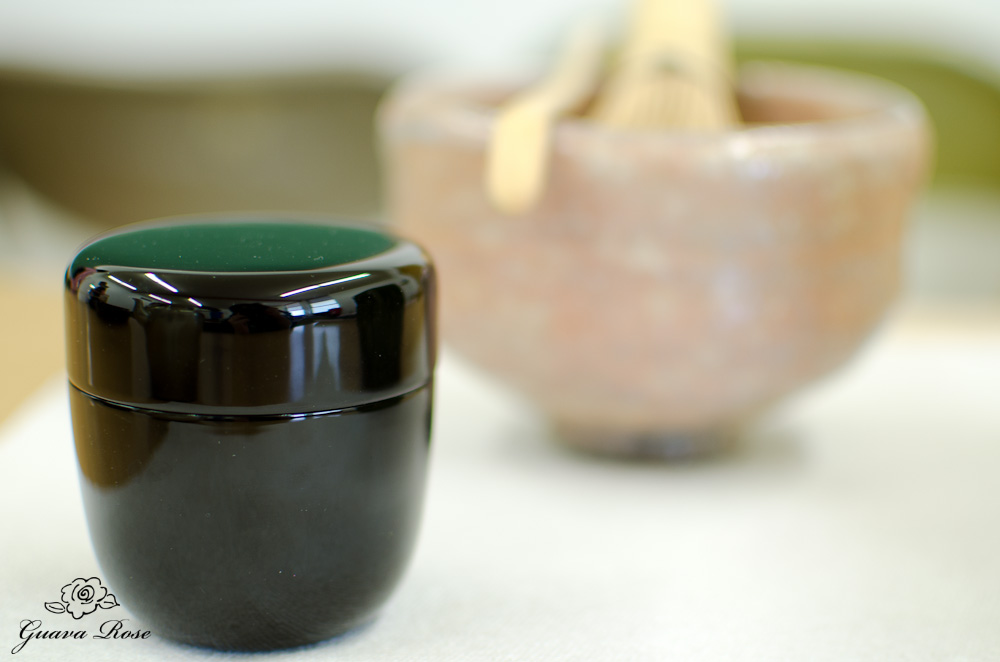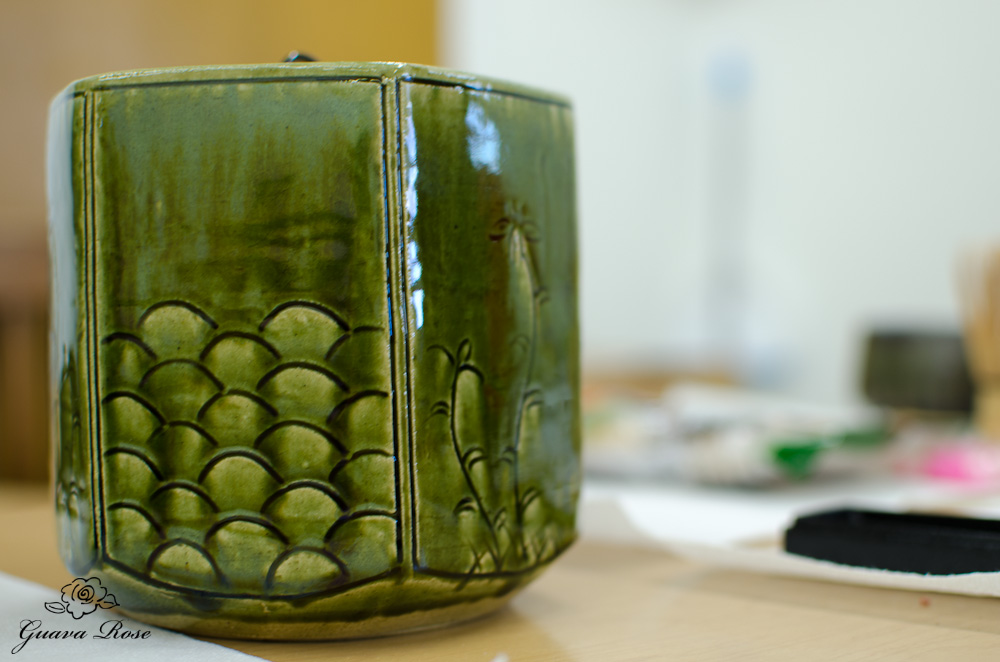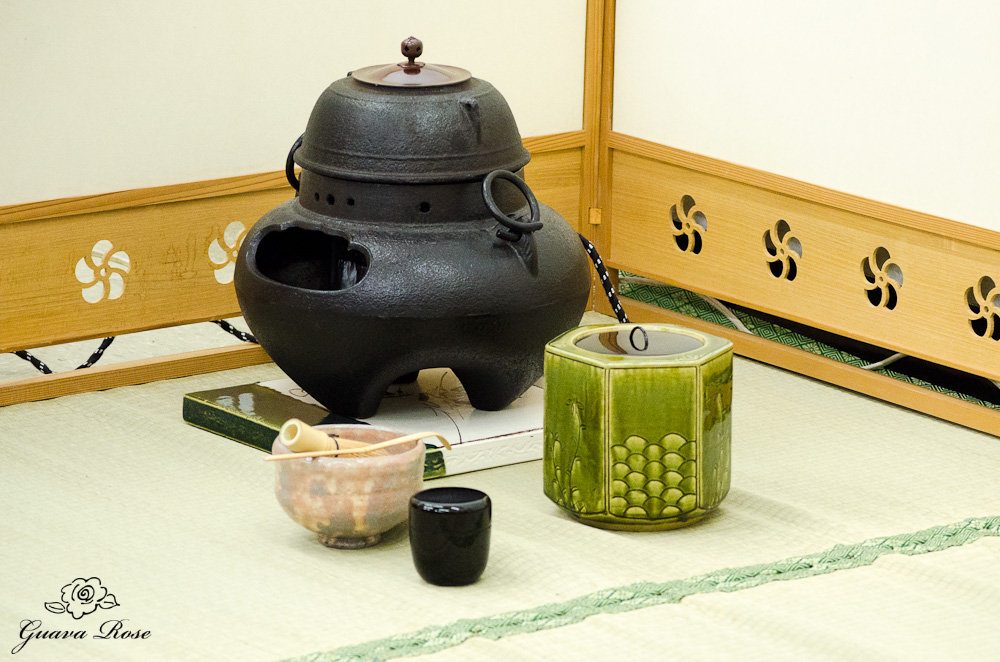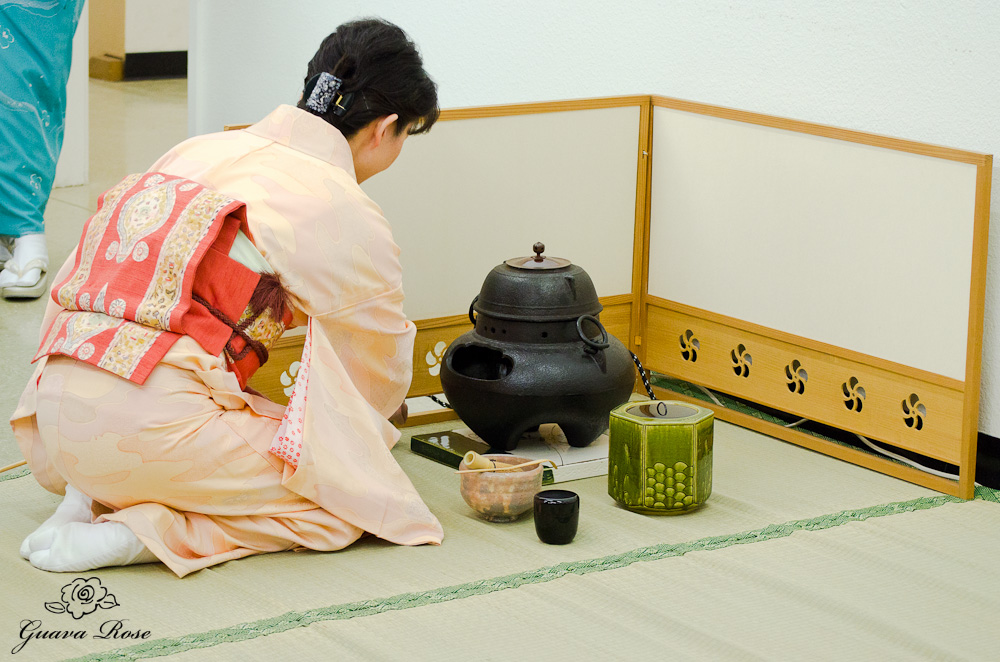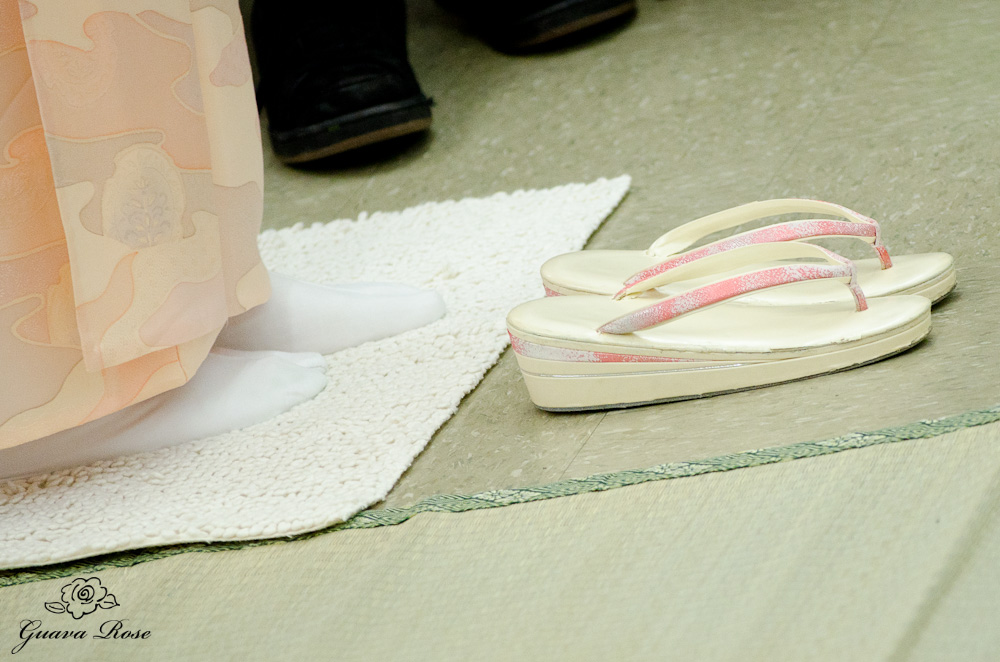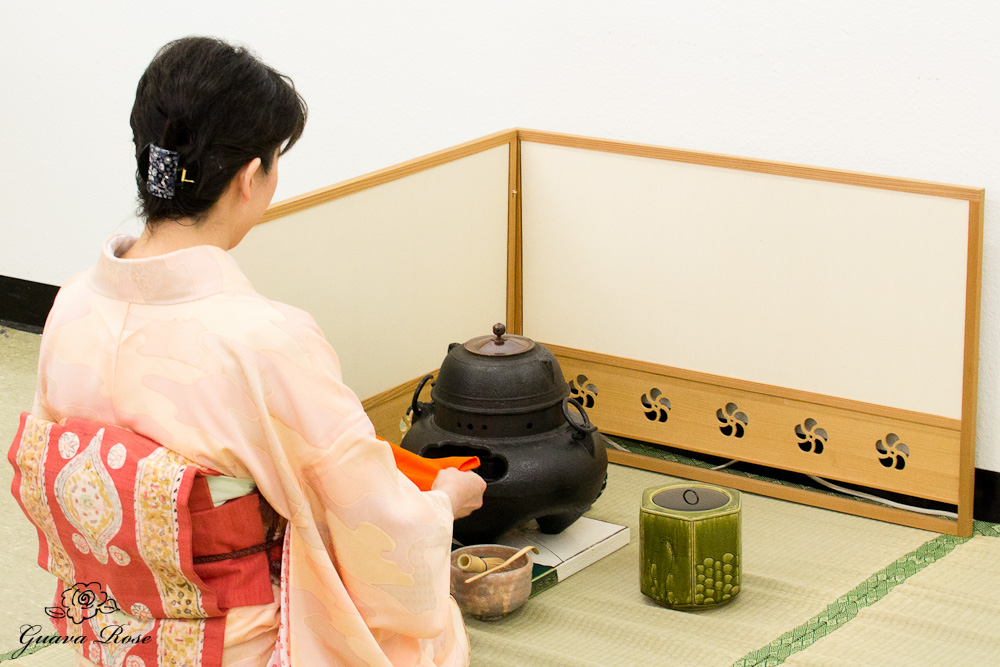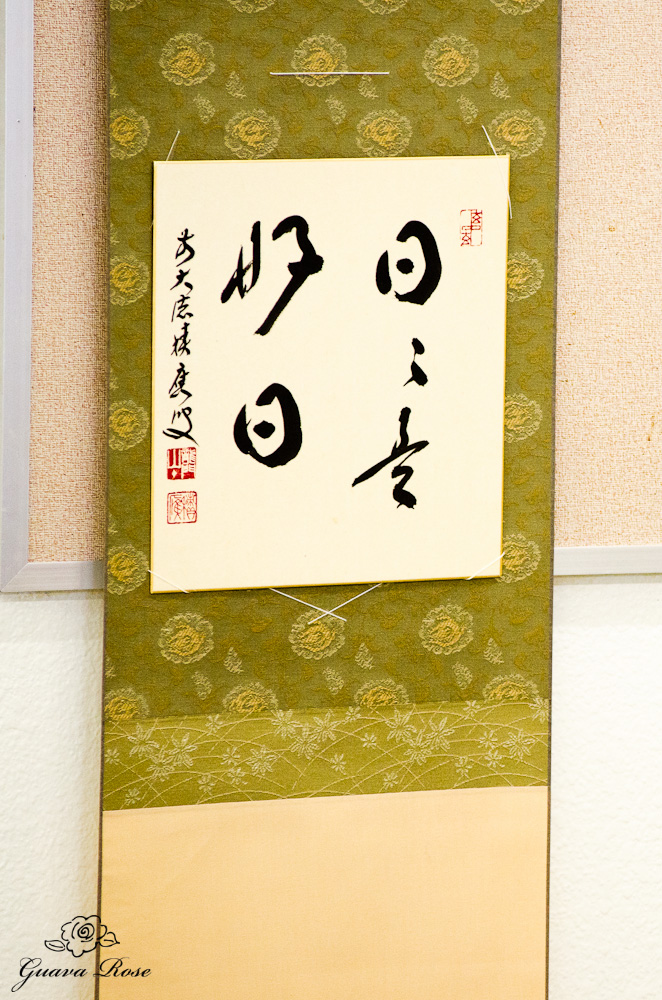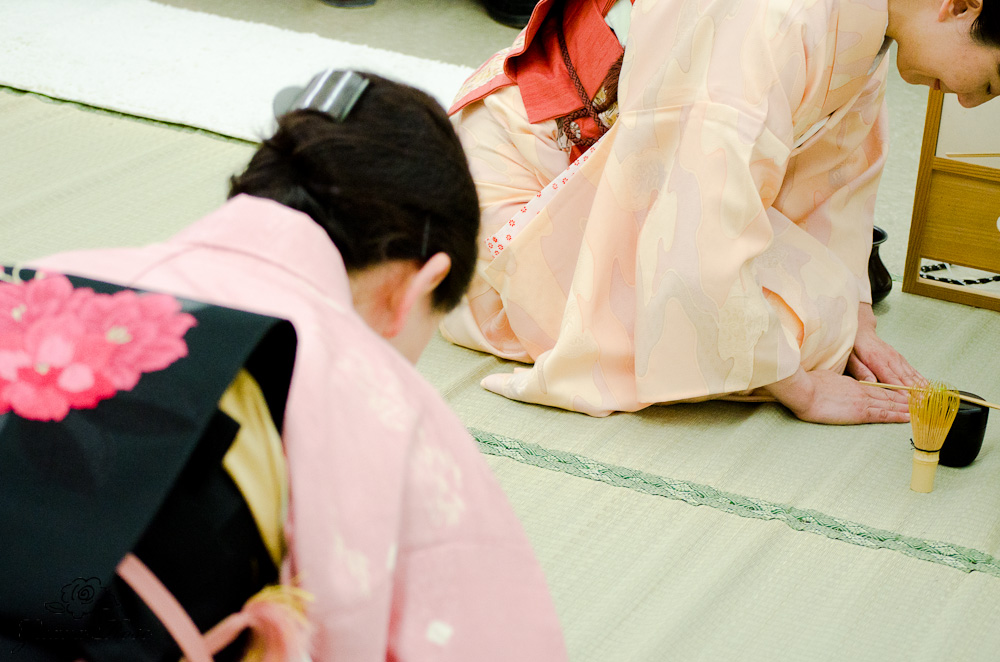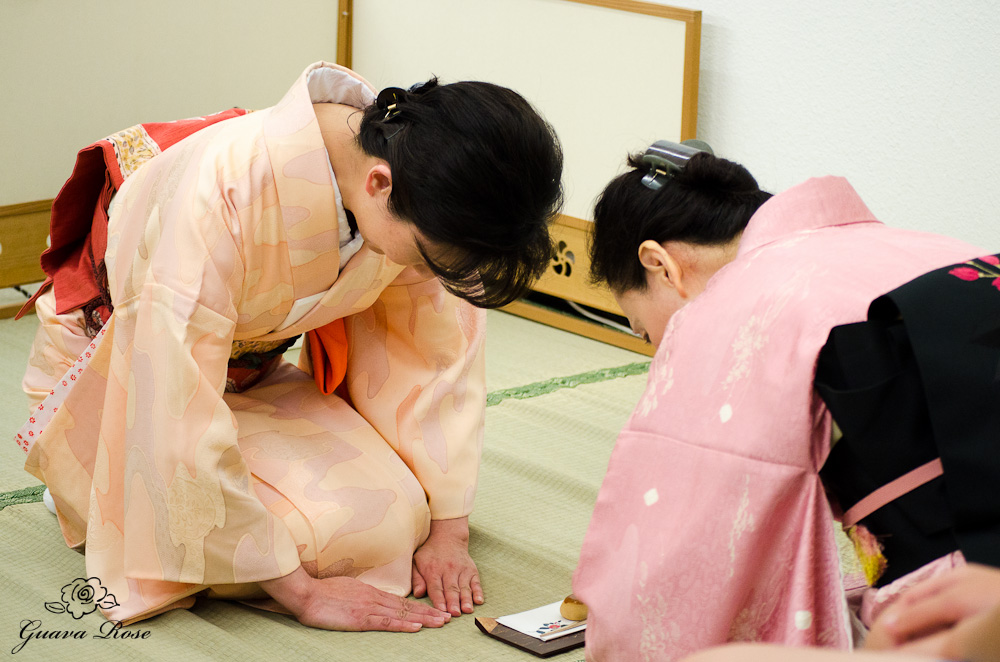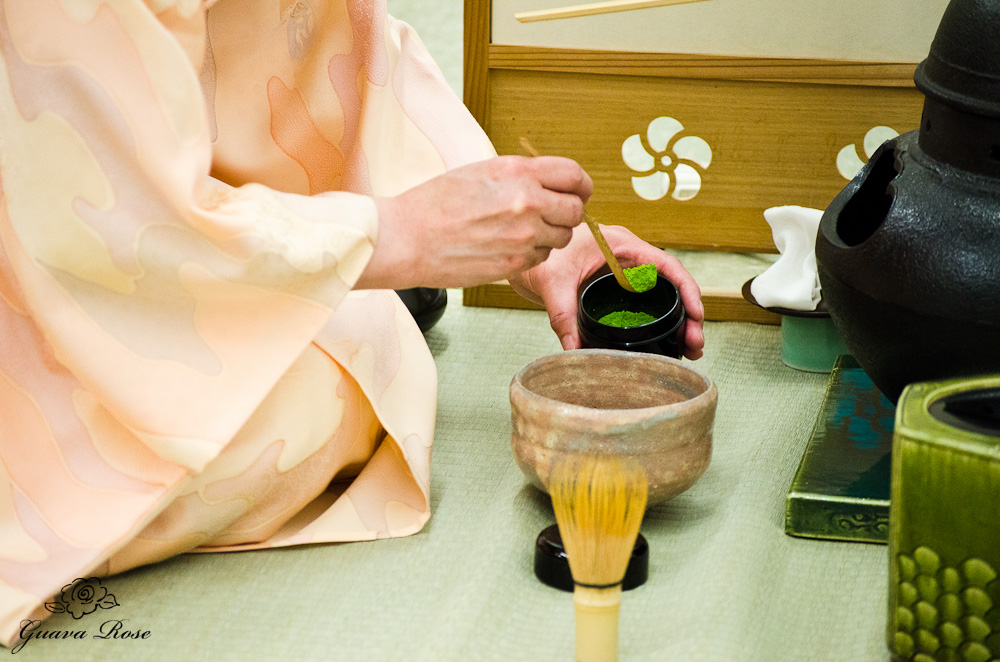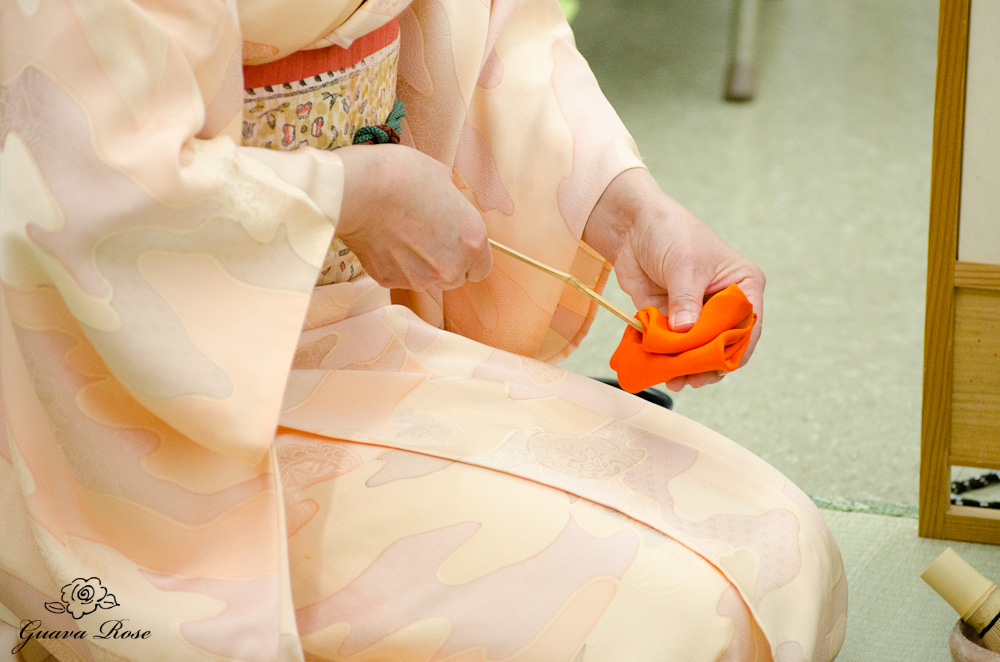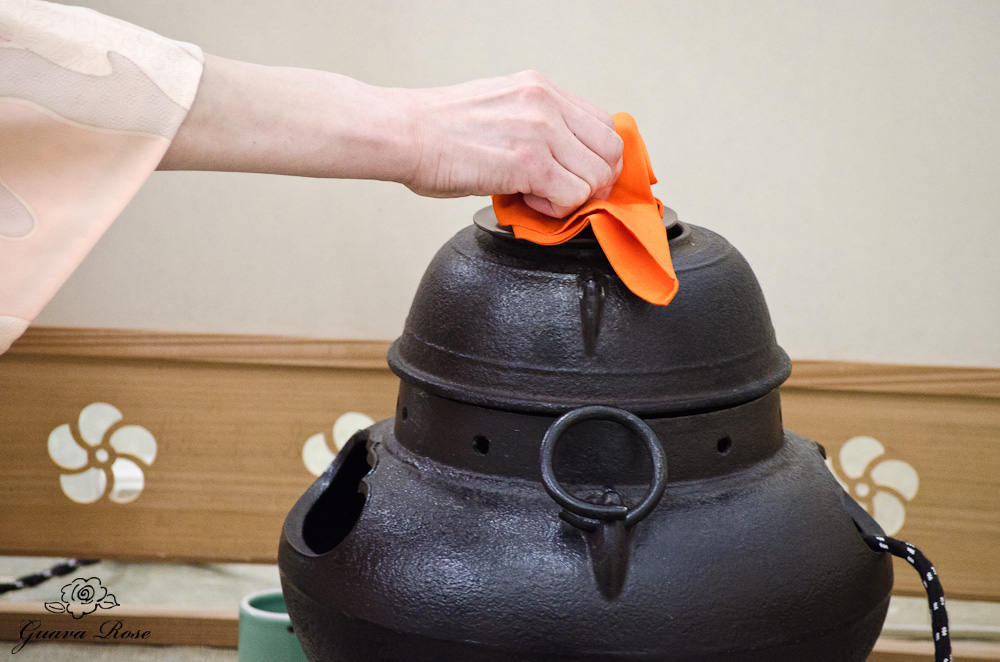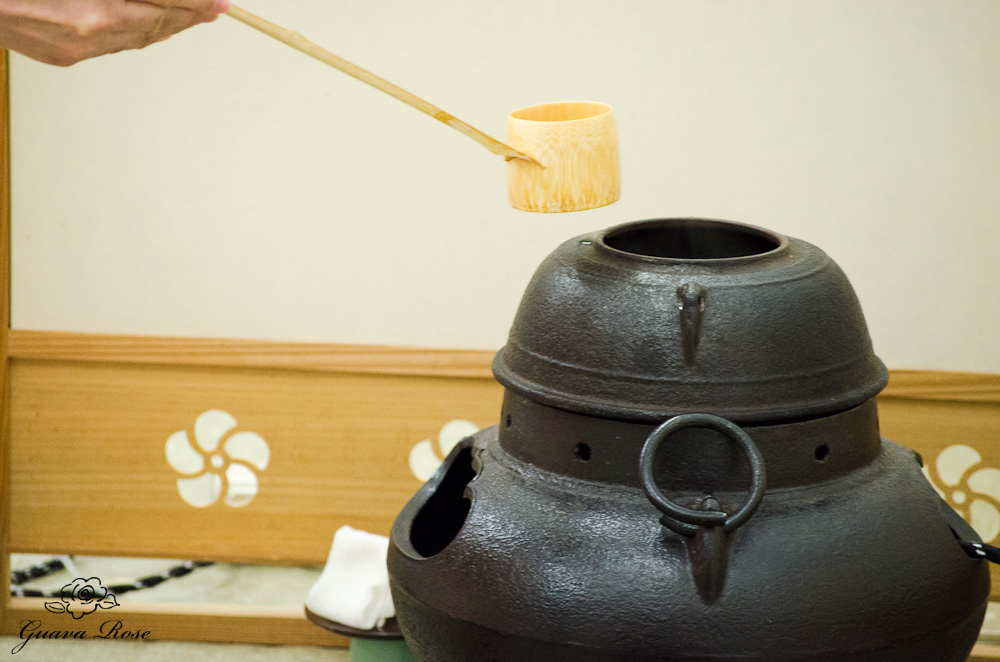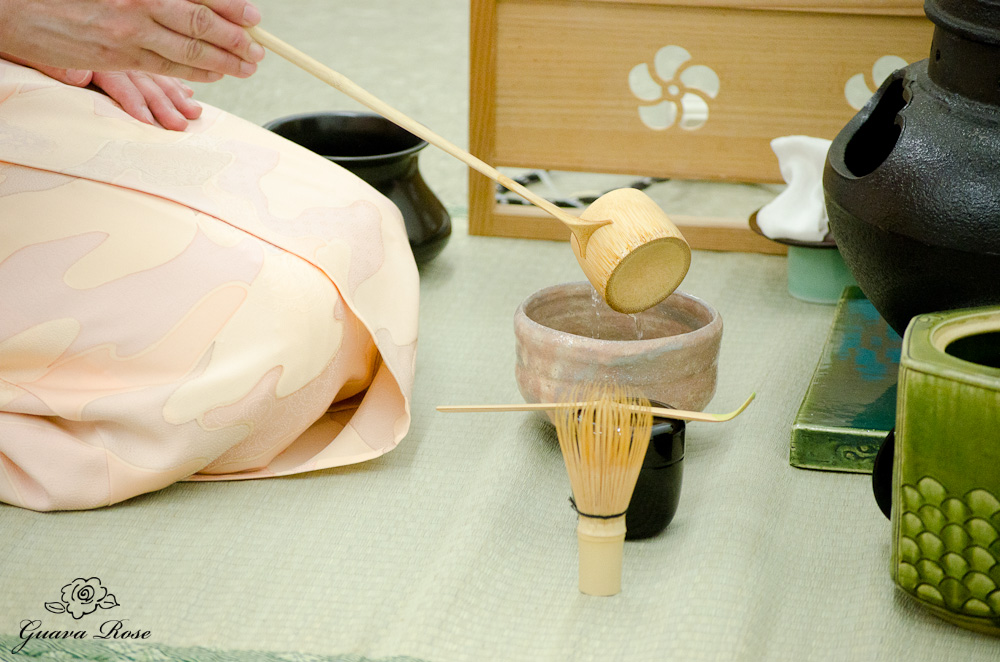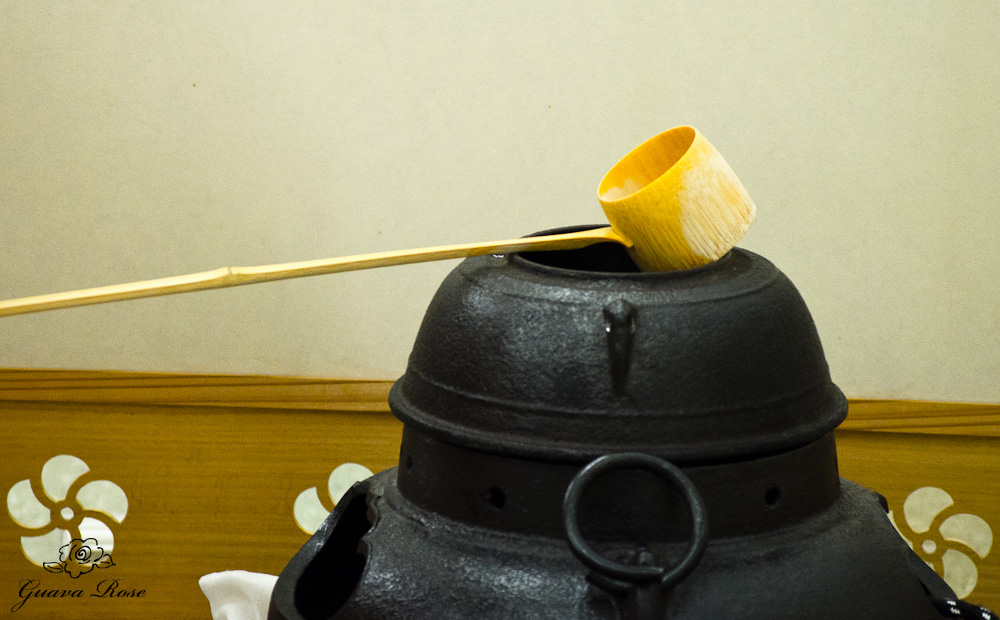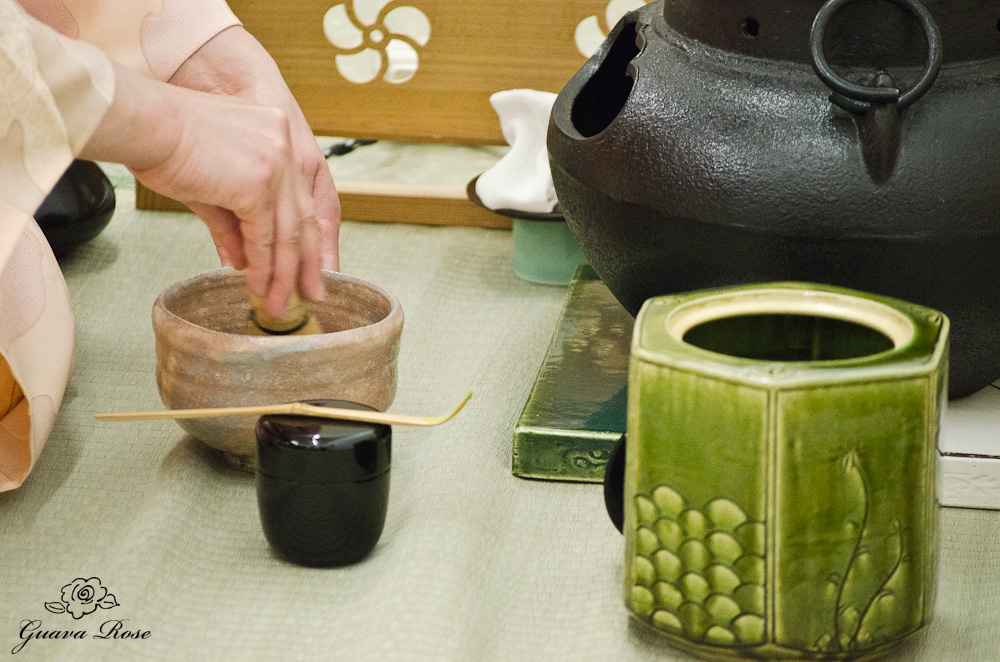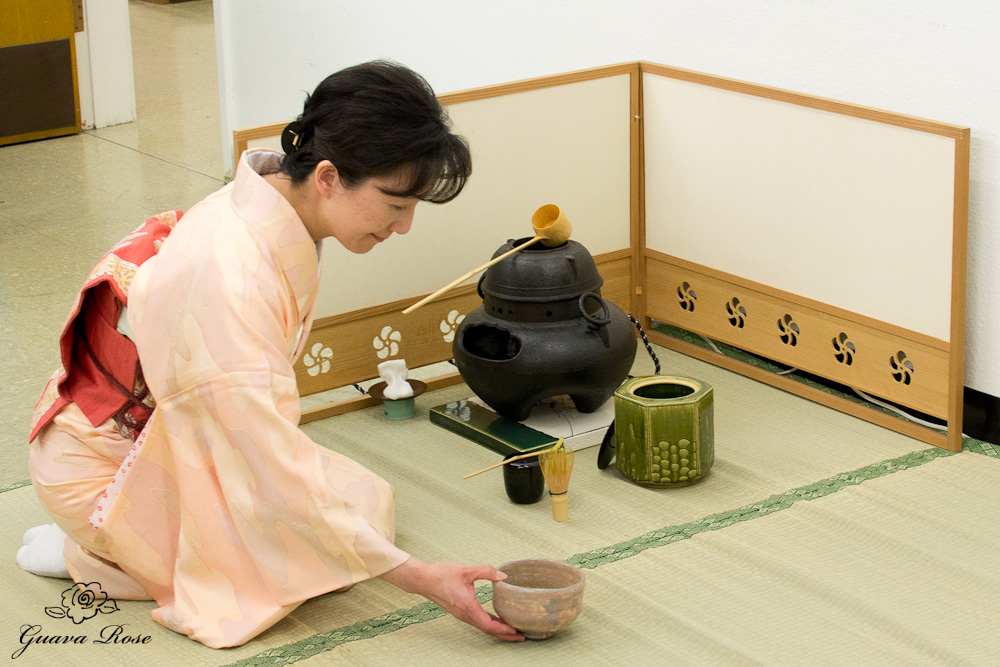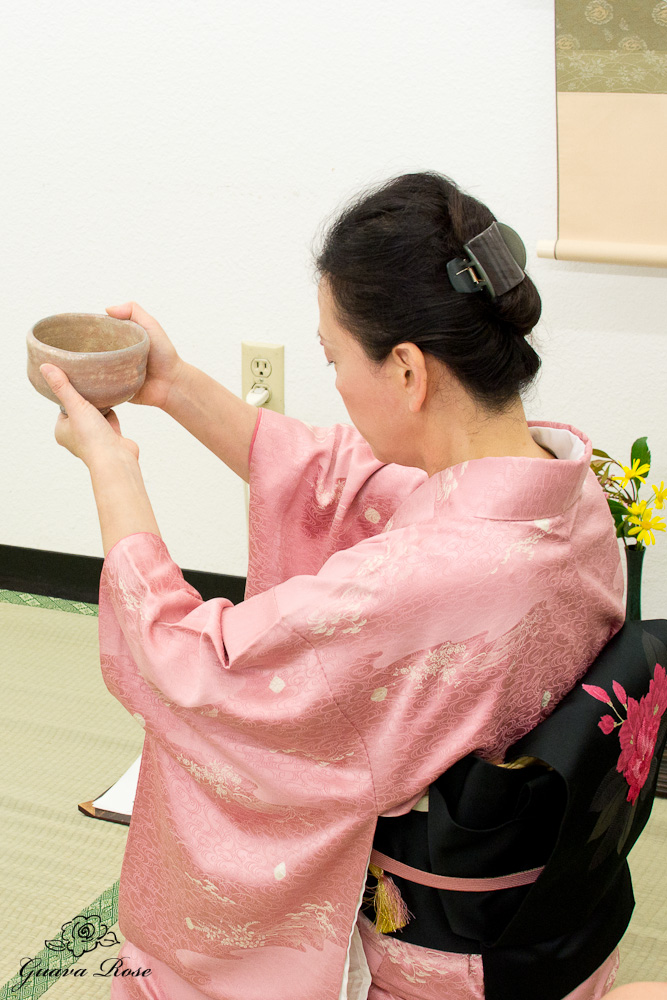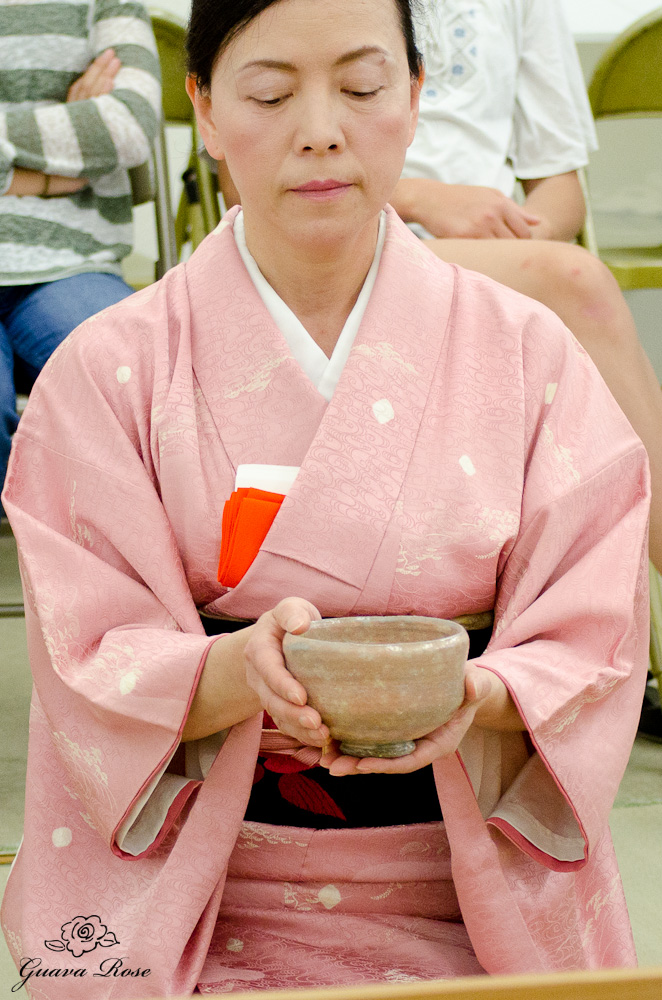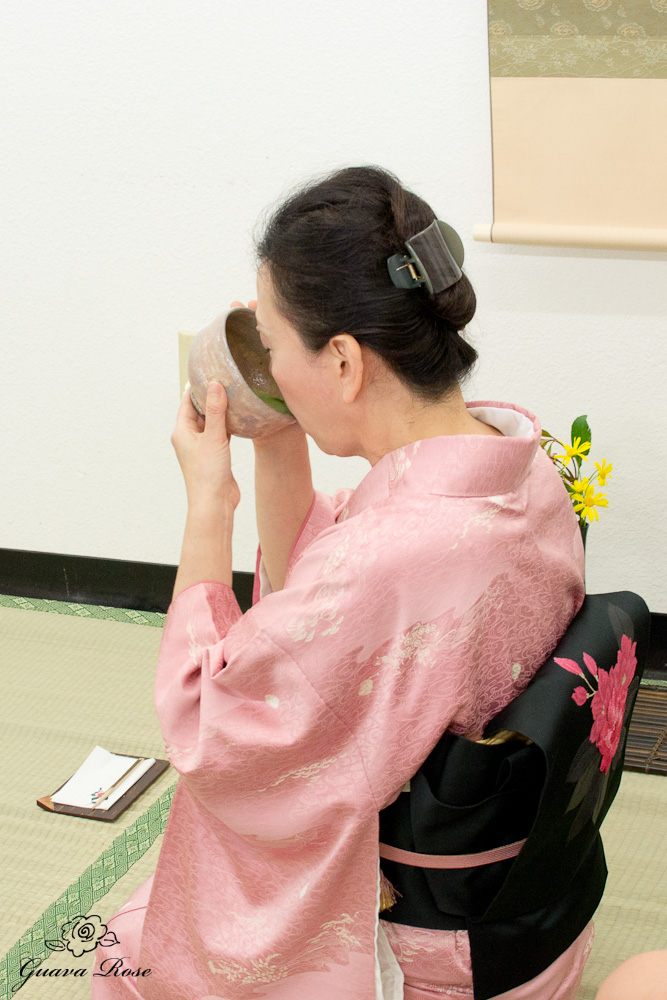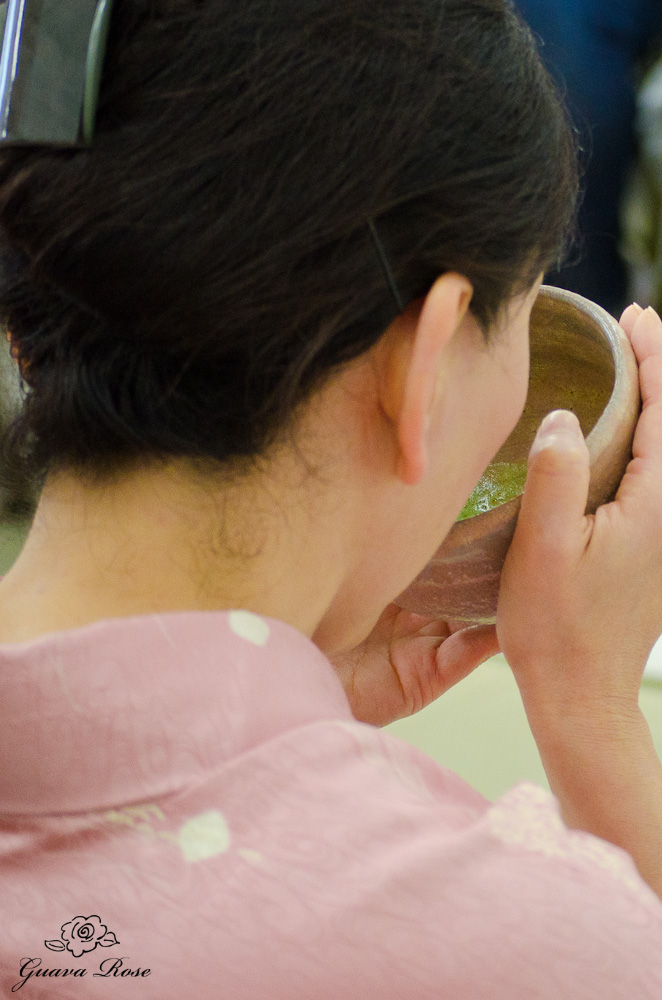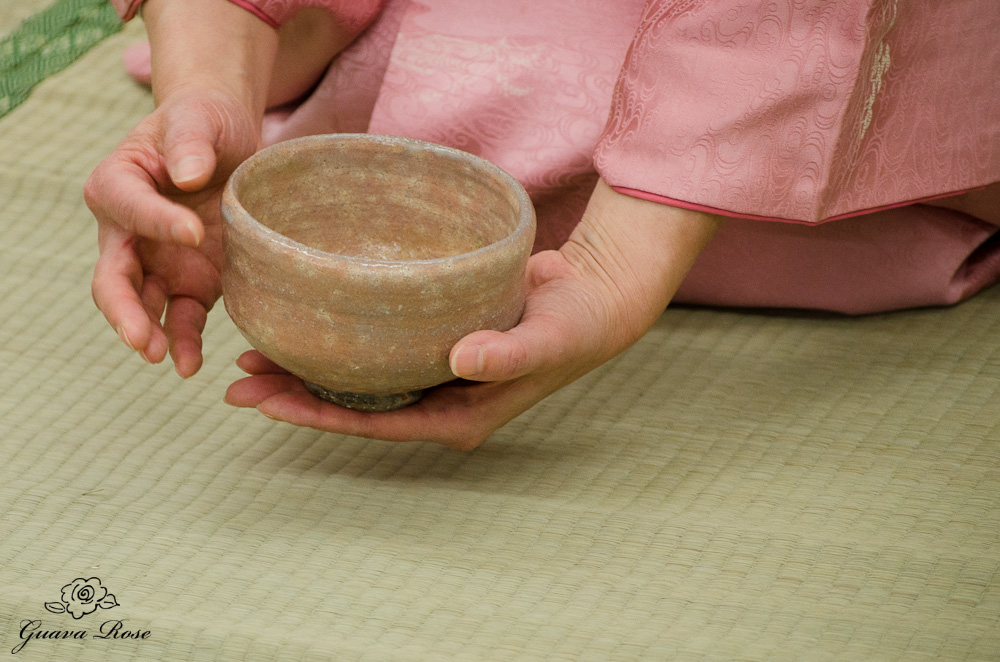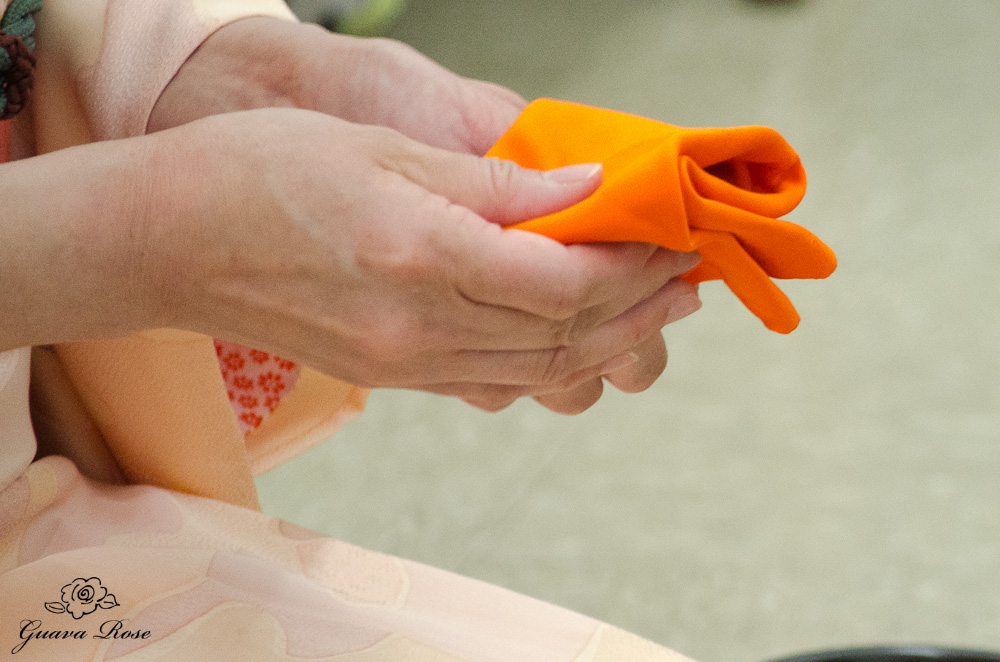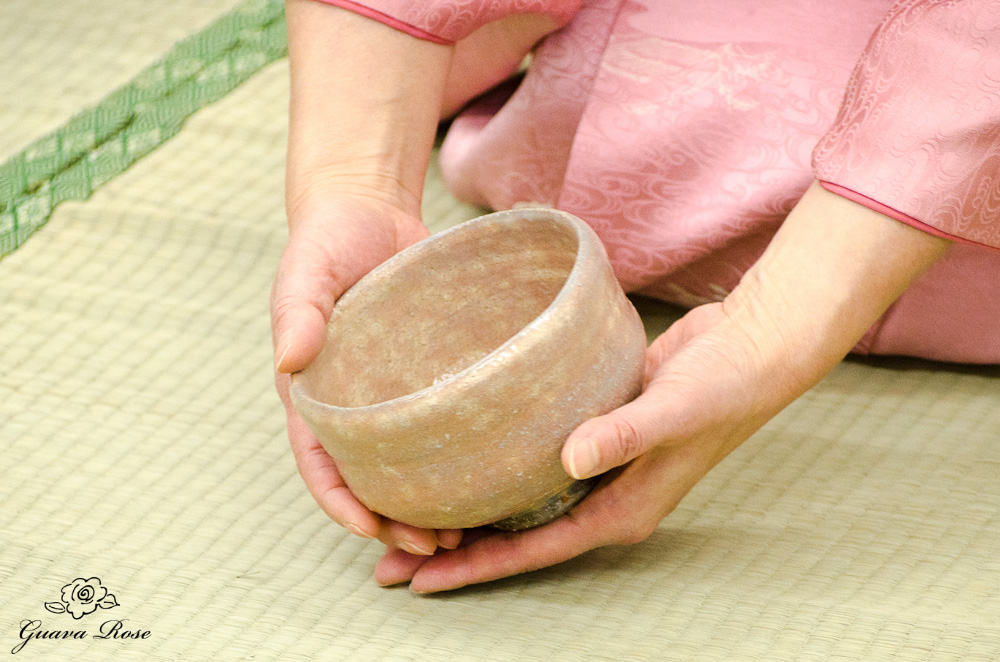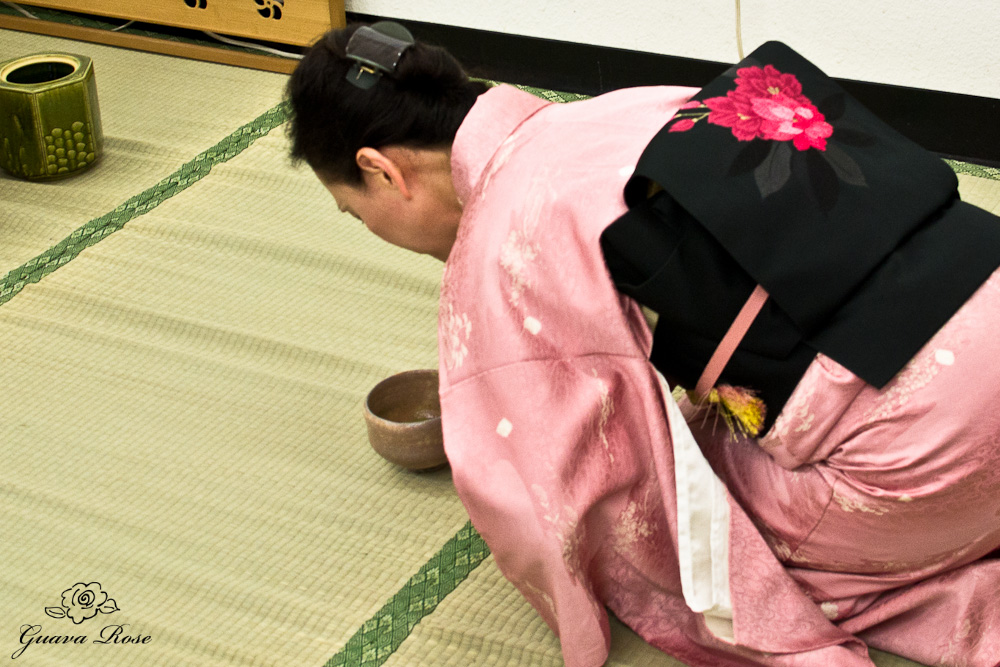Chanoyu, Japanese Tea Ceremony, is a highly artistic presentation of the preparation, serving, and drinking of matcha, powdered green tea.
I was able to participate, along with Kallie, Laurel and Quill when the Omotesenke School of San Francisco came to present Chanoyu for the girls’ Japanese class.
Matcha was a popular drink in China during the Song Dynasty (960 – 1279). It was brought to Japan by a monk named Eisai in the 12th century. After becoming first popular with the Zen priests, it then spread to the upper classes.
Chanoyu today represents the Japanese culture of hospitality. Tea is served in honor of a guest’s visit.
The five sensory pleasures of the art of tea are:
-the pleasure of viewing the art and craft of tea utensils
-the warmth of the tea bowl in your hands, and it’s texture against your lips
-the taste of tea and sweets
-the fragrance of incense
-the sound of the water as it is ladled from the kettle
We had three lovely ladies perform this art for us: head teacher Sohsei (Mayumi) Kagami, Etsuko Tsukano, and Mariko Sawada. They were so kind pack up all the equipment and drive from San Francisco to set up for an early morning class.
First tatami mats are arranged on the floor. A hanging scroll (kakejiku) corresponding to the day’s theme, and a flower container with living flowers are displayed.
This hard to find cast iron kettle was brought back from Japan by Sohsei Kagami’s husband for her.
For convenience, she used an electric plate to heat the kettle. Traditionally charcoal is burned in a brazier (furo) to heat the kettle (kama).
A tea container (natsume, chaire) holds the powdered green tea.
Water, stored in the water jar (mizusashi), is needed to rinse the tea bowl and to supplement the boiling water in the kettle.
Added amounts help to regulate the rising steam.
Here we also see the tea bowl, tea whisk (chasen), and tea scoop (chashaku).
Each item is slowly and carefully placed.
Mulitiple trips to the tatami mats require the removal of footwear to keep the mats clean.
Folding the fukusa, a square, silk cloth used to wipe and purify some of the utensils.
The ladies stored them neatly tucked into the front of their kimonos, easily accessible.
At start, Mariko silently reads and ponders over the scroll.
“Nichinichi-korekoujitsu” (Each day is the best day)
Today’s scroll was specifically chosen by Sohsei Kagami for the students.
The tea demonstration begins with a bow.
Etsuko serves the sweet (manju here), which Mariko must eat completely before being served the tea.
The chashaku is used to scoop the powdered green tea into the tea bowl.
Wiping the tea scoop clean with the fukusa.
Opening the hot lid of the kettle.
A water ladle (hishaku) is used to scoop hot and cold water.
Ladeling hot water into the tea bowl.
The position of the hishaku resting on top of the kettle is determined by whether you have used it to take a scoop of hot water or cold water.
I’m not positive, but I think this position represents having just scooped hot water.
Whisking the matcha with the chasen.
After the matcha is served to you, place the bowl on the tatami to your left. Bow to the person on your left, who at the same time will also be bowing back to you.
Bowing means “I am going to have a bowl of tea before you.”
Turn back to the host, place the tea bowl in front of you, and thank the host for preparing the tea by saying, “Otemae o choudai itashimasu.”
The tea bowl is picked up from the tatami, cupped on the right side with your right hand and craddled on the bottom by your left palm.
Slowly raise the bowl to eye level, demonstrating gratitude to the host.
Feel the warmth of the bowl.
Rotate the bowl with your right hand, a quarter turn clockwise two times.
Holding the bowl with two hands, drink all of the matcha.
A small slurp is customary and shows appreciation.
Wipe the rim of the bowl clean with your fingers.
The white paper napkin on which the manju was served may then be used to wipe your hand.
Turn the bowl counter clockwise two quarter turns to return the bowl to it’s original position.
The fukusa is also used if needed to wipe anything.
Carefully look at all sides of the bowl, including the bottom, to enjoy it’s beauty.
To a trained eye, the bottom may reveal the type of clay it is made from, and whether it is earthenware, stoneware, or porcelain.
When you are done, look at it one more time, then return the bowl to its original position.
One last bow, thank you so much, domo arigato.
To be continued…next we’ll see how the students did.


